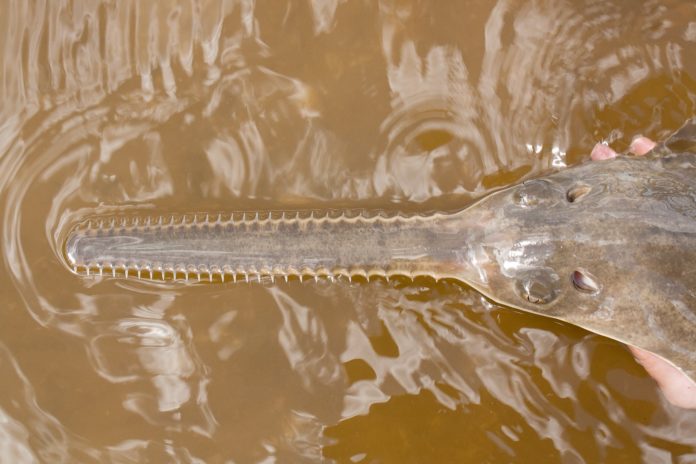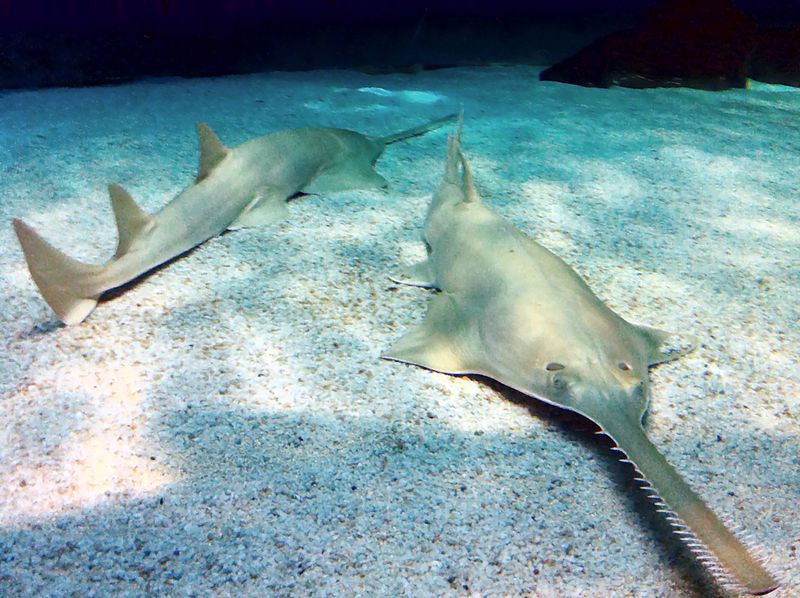
Sawfishes or Carpenter sharks are one of the strangest species of shark. Recognised by their long and flat nose which is lined by sharp teeth, sawfish have a bizarre physical appearance unlike no other. Yet, recent research has told us that these sharks are more unusual than we could have possibly imagined.
To the surprise of scientists, after monitoring these species, they have concluded that the sawfish is fighting back from population depletion. Females of the species are putting themselves through a process called parthenogenesis also known as asexual reproduction (virgin births).
Sawfish once inhabited environments in several locations all over the world—from the Atlantic to the Indo Pacific—but as a result of habitat destruction and over fishing, their population abundance has declined drastically. The species is now on the International Union for Conservation of Nature (IUCN) list of critically endangered species and is only found in a handful of locations within Southwest Florida.
Asexual reproduction is not an uncommon anomaly within the animal kingdom, some amphibians, birds and snakes have all been found reproducing this way in captivity, but rarely in the wild. Yet the sawfish’s environmental pressures have enforced it to break the rules of reproduction.
“Vertebrate animals that we always thought were restricted to reproducing via sex in the wild actually have another option that does not involve sex,” study co-author Demian Chapman a marine biologist at the Stony Brook University in New York.
The incredible discover was stumbled upon by the study’s lead author, Andrew Fields, also at Stony Brook University, said in a statement “We were conducting a routine DNA fingerprinting of the sawfish found in this area in order to see if relatives were often reproducing due to their small population size”. But the DNA data had a more surprising story to tell.
The scientists found seven parthenogens (an organism that reproduces via parthenogenesis). Out of the seven, five of these turned out to be roughly the same age, indicating that they were birthed from the same parent.
Like many organisms, sawfish go through a process of meiosis, which involves the division of cells to form sex cells, each of which possesses half of the genetic material to make offspring. The sawfish’s sex cells however pair up and fuse together to make the complete genetic makeup required to generate offspring. However, they are not exact clones of the mother due to the cells slightly differing in each pair.
It is seen that asexual reproduction is a form of inbreeding, it is therefore generally thought that the offspring would be born with defects or disadvantages, ultimately reducing their lifespan. However, the seven sawfish studied appear perfectly healthy and normal sized for their age, displaying no disadvantage what so ever.
Parthenogenesis is normally seen to occur in dwindling populations and is a last resort for some female species that cannot find any males to mate with. Evidence such as this will only encourage further conservation efforts, as scientists have stated that parthenogenesis alone is not enough to save the critically endangered sawfish from extinction.
You want to support Anonymous Independent & Investigative News? Please, follow us on Twitter: Follow @AnonymousNewsHQ





